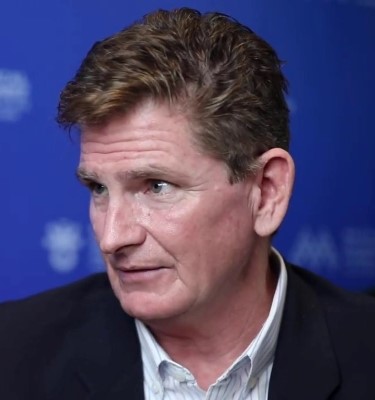‘Pharmaceutical’ Controls, Lower Costs: Future Of Cannabinoid Ingredients In Biosynthesis?
Executive Summary
Synthetics are necessary for drugs containing cannabinoids because the active ingredient must be consistent from dose to dose. Cannabinoids extracted from hemp vary from plant to plant and more widely from crop to crop, but consistency should matter for cannabinoids used as dietary ingredients, says BioMedican president Dennis O’Neill.
The future of hemp-based cannabinoids as dietary ingredients should track with their development for pharmaceutical uses, say executives with biosynthesis firms and market consultants.
“We have built a biosynthesis platform where we can market rare cannabinoids and produce them at 99% pharmaceutical grade, organic, non-GMO, bio-identical, utilizing 90% less natural resources over cultivation,” said Dennis O’Neill, a former investment banker now heading BioMedican Inc.
“The end result is a pharmaceutical grade compound that is 70% to 90% less expensive than large scale wholesale prices,” he said in a recent interview.
The only cannabinoid-based drug approved for sales in the US is made with synthetic cannabidiol (CBD). Synthetics are necessary for drugs containing CBD or other cannabinoids because the active ingredient must be consistent from dose to dose. While cannabinoids extracted from hemp vary some from plant to plant and more widely from crop to crop, synthetic ingredients are consistently equivalent.
And consistency should matter for cannabinoids used as dietary ingredients, O’Neill told HBW Insight.
“Every species is different, every plant is different. It’s kind of like you can never make the same wine twice—you can never grow the same crop twice. And for clinical trials, it’s critically important that you have the exact same compound every single time. Otherwise the results will vary,” he said,
 biomedican president dennis o'neill: "people who grow cannabis to smoke or for cannabinoids, they’re going to be just fine. It’s just hard for anyone to grow cannabis for rare cannabinoids.”
biomedican president dennis o'neill: "people who grow cannabis to smoke or for cannabinoids, they’re going to be just fine. It’s just hard for anyone to grow cannabis for rare cannabinoids.”
San Francisco-based BioMedican expects the types of cannabinoids it is ready or preparing to produce will be in demand for clinical trials for use in dietary supplements as well as drugs (see related story).
Like cannabis-based substances, extracts from hemp, although it no longer is scheduled as a controlled substance in the US, is excluded from lawful use as dietary ingredients or food additives under Food and Drug Administration regulations because they have been studied or approved for use in drugs. The agency for two years, starting after the market for hemp-based supplements and food already was booming, has allowed sales of the products that are manufactured and marketed in compliance with all relevant regulations, particularly for claims and manufacturing practices. (Also see "Biden Administration Pause On Pending Trump-Era Rules Stalls FDA Cannabinoids Guidance Progress" - HBW Insight, 27 Jan, 2021.)
Hemp was de-scheduled as a controlled substance in the 2018 farm bill, which defined it as containing no more than 0.3% tetrahydrocannabinol (THC), the ingredient in cannabis known for its psychoactive properties.
However, even with sales of non-drug products containing CBD and other cannabinoids continue climbing, most major consumer health brands have not made or launched products. Until FDA regulations recognize cannabinoids as lawful ingredients for supplements, food and other non-drug products such as topicals, most larger firms will steer clear of the space. (Also see "CBD Market Provides ‘Enormous Incentive’ For FDA's Regulatory Answer But Decision Remains TBD" - HBW Insight, 9 Dec, 2020.)
‘Large Volume, Consistent Product’
US consumer health and personal care product firms that haven’t entered the cannabinoids market, O’Neill says, should be encouraged that BioMedican and others are using biosynthesis production.
“We can provide large volume, consistent product, high quality, low costs. It checks a lot of the boxes that are problem points for major brands to come into this space,” he said.
Extracting CBD from hemp already is expensive while producing inconsistent ingredients, but extracting the rarer constituents from the plant is even more costly.
“They’re present in CBD but they show up in very, very trace amounts, minimal, minimal amounts,” O’Neill said.
“That’s the reason why it’s hard to cultivate and extract and have a compound that’s commercially available. You just have to grow thousands and thousands of acres of hemp or cannabis to be able to come up with enough of these rare cannabinoids and the costs would be exorbitant.”
Extracts from plants grown across thousands of acres are going to be widely different and have even wider variation from season to season.
“No matter what you do, they’ve done everything to try and replicate a growth season, they’ve said no matter what you do it’s always different,” O’Neill said.
Hemp farming, though, will remain important to the cannabinoids supply chain, he added. “One of the things that’s going to be helpful for the overall market is that people who grow cannabis to smoke or for cannabinoids, they’re going to be just fine. It’s just hard for anyone to grow cannabis for these rare cannabinoids.”
Cannabis Not ‘A Cannabinoid Factory’
Jeremy Friedberg, the chief scientific officer at cannabinoid developer Lavvan Inc., also has explained the advantages of biosynthesis over cultivation.
In a February 2020 post on the Global Engage blog, Friedberg said that as “an opportunistic weed,” cannabis, including what would be considered hemp in the US, “certainly didn’t evolve to be a cannabinoid factory.”
Cannabis “wants to be ‘dirty,’ and for cultivators, it is a continuous battle to keep it ‘clean’” because it is “happily encouraging all kinds of other microorganisms to live inside and on it to improve its ability to succeed as a weed.” While not hurting and in some cases beneficial the plant, “many of those are harmful to humans,” Friedberg explained.
Firms "heavily focused on cultivation should take advantage of this moment to explore the potential impact of cannabis biosynthesis on their business and mitigate any risks." — Deloitte report
Additionally, cultivators work “with a living system, essentially producing compounds out of a dynamic organism at the whims of an ever-changing environment. Despite how many controls one places on the cultivation environment, the nature of living organisms is that they are variable and the products they produce are variable. In contrast, large cannabinoid buyers require consistency and stable supply from their suppliers.”
Separately, Deloitte LLP consultants in Canada stated in a 2020 report that owning acres won’t be an advantage in developing rare cannabinoid. “In short, LPs [licensed producers] with massive acreage under cultivation worldwide could in future find themselves competing against companies that can produce particular cannabinoids at scale and with consistent quality,” according to a report from consultants led Bill Stamatis, a partner at Deloitte financial advisory.
“For cannabis companies outside the cultivation sector, cannabis biosynthesis could open up new sources of low-cost cannabinoids,” they wrote.
And firms cultivating hemp and cannabis for specific cannabinoids should consider turning to biosynthesis. “Particularly those heavily focused on cultivation, should take advantage of this moment to explore the potential impact of cannabis biosynthesis on their business and mitigate any risks, as well as look for ways to capitalize on the technology to strengthen their own competitive position,” according to the Deloitte report.
House members have twice introduced bills instructing the FDA to waive its exclusion rule and all lawful use of hemp-based cannabinoids, first during the previous session of Congress and again in February for the current session. (Also see "CBD Regulation Bill Filed In US House Again; VMS In Pre-Tax Savings Accounts In First Senate Vote" - HBW Insight, 5 Feb, 2021.)
Making interstate commerce of cannabis as well as hemp was proposed in separation House legislation intended to boost the cannabis industry across the country and expunge criminal records for persons convicted of marijuana-related crimes and prohibit denying public program benefits to them. The "Marijuana Opportunity Reinvention and Expungement" (MORE) Act, H.R. 3884, introduced by Rep. Jerold Nadler, D-NY, in 2019, passed the House in largely partisan voting in December; the legislation is expected to be refiled during the current session but had not been as of 26 February. (Also see "Unpublished And Under Review? US FDA’s CBD Policy Draft Guidance Still Has Industry Talking" - HBW Insight, 3 Aug, 2020.)
‘Start With Sugar Water’
While all biosynthetic cannabinoid producers have an economic advantage of not needing acreage to grow hemp or cannabis, O’Neill says BioMedican has lower costs than its competitors. That’s because it uses less glucose, or sugar, in its process.
He said BioMedican’s process allowed producing rare cannabinoids at costs of around $1 a gram. With traditional extraction and production, CBD from hemp costs around $8 a gram and rare cannabinoids between $40 and $60 a gram.
“For biosynthesis, basically you start off with sugar water and a specialized agent. You put that through a fermentation process and depending on what you’re targeting, you end up with the end product,” he said.
While around 80% of cannabinoid biosynthesis costs are for sugar, BioMedican’s system uses 60% to 70% less sugar than others, he said.
“One of the things about using biosynthesis, is that your production facility has to be a near a large sugar source. We’ll be opening up production facilities in the United States, Mexico, Europe and Asia because we have distribution partners in those locations. We’re being very careful about where we’re going to put those because even with the decreased amount of sugar that we do use, we still need a sizable sugar source,” O’Neill said.
